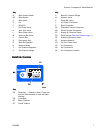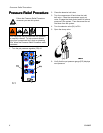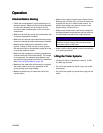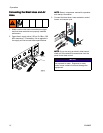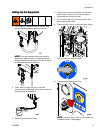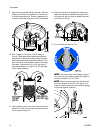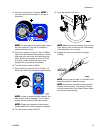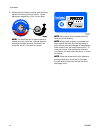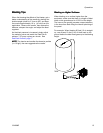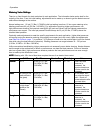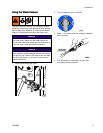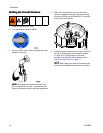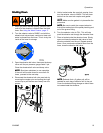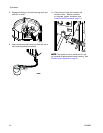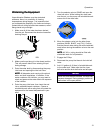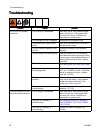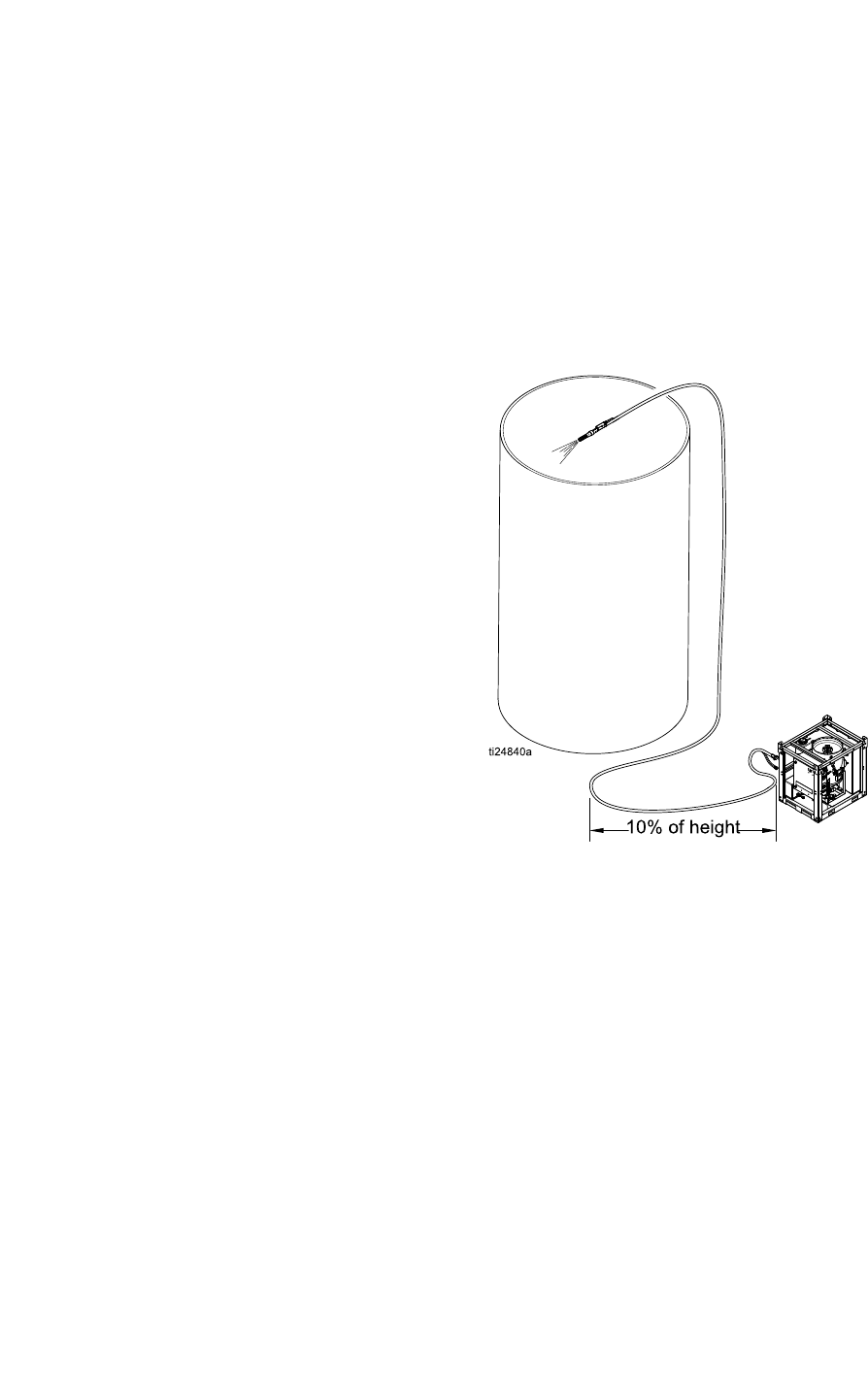
Operation
BlastingBlasting
Blasting
TipsTips
Tips
When rst learning the effects of the blaster, get a
better understanding of the results by starting at a
shallow angle (closer to 0° than to 90°) and keep
the nozzle approximately 16 in. (40 cm) from the
application. Observe the results, then reduce the
distance, steepen the angle, and adjust the blast
regulator.
As the blast pressure is increased, slowly adjust
the metering valve and watch the DataTrak to
achieve 7-10 pump cycles per minute. See
DataTrak Controls, page 7 .
NOTE:NOTE:
NOTE:
The heavier and smaller the abrasive particle
(i.e. 80-grit), the more aggressive the results.
BlastingBlasting
Blasting
onon
on
HigherHigher
Higher
SurfacesSurfaces
Surfaces
When blasting on a surface higher than the
equipment, make sure that there is a length of blast
hose on the ground equal to 10-20% of the height.
The hose on the ground prevents unspent abrasive
in the hose from back-lling the internal plumbing of
the panel.
For example: When blasting 50 feet (15 m) straight
up, use at least 10 feet (3 m) of blast hose on the
ground before the blast hose goes up to the blasting
height.
334666B15



